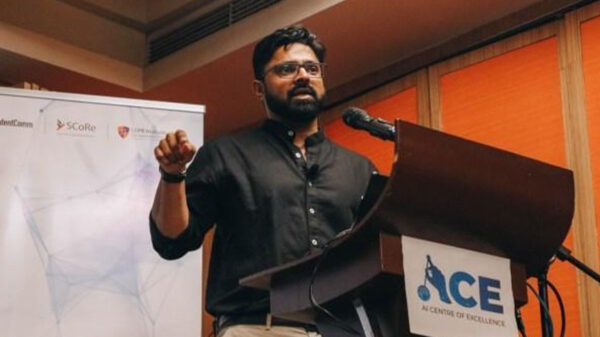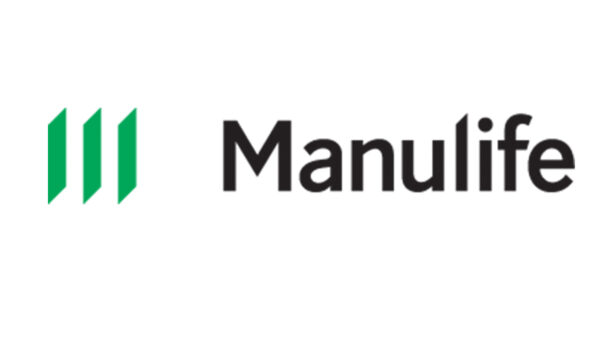2018 promises to be another exciting year for information technology, according to technology companies.
Vendor predictions collated by UpgradeMag.com revealed five common forecasts related to artificial intelligence, Internet of Things, blockchain, cloud computing, and IT security.
UpgradeMag.com’s research team also surveyed 20 chief information officers about their top 5 IT projects for 2018 and the top 5 IT skills they’ll be needing.
VENDOR PREDICTIONS
- AI will get smarter and more practical in 2018
2018 will see a growth in artificial intelligence (AI) deployments across the board as companies see real returns on their investments. AI solutions will be further deployed to facilitate the digital transformation of different industries.
A global survey of more than 550 senior executives across 30 countries and territories reports that 91 percent of “iconic” companies — those that maintain both the highest levels of customer experience (CX) satisfaction and have world-leading brand recognition — deploy Artificial Intelligence (AI) solutions to increase customer satisfaction, compared to 42 percent of companies in their fields overall.
“More enterprises will deploy AI and machine learning to make decisions and manage day-to-day operations; and enriched by natural-language processing or NLP, chat bots will continue to be important in 2018, and will be the future of mobile technology,” said Globe CIO Pebbles Sy-Manalang.
Some theorists claim AI will replace jobs, but it may also create new ones, unleashing new opportunities for humans.
“AI-based technologies are impacting every business function today, including HR, and this will only continue to advance,” says Bernard Solomon, Head of Applications, Malaysia & Head of Human Capital Management (HCM) Applications, ASEAN, Oracle Corp. “Think about sifting through thousands of résumés and millions of social and digital conversations for recruiting purposes; that doesn’t scale at the human level. But AI tools can complement humans and make that process immeasurably more effective.”
But AI will also be used to conduct cyber attacks, warn security vendors.
While conversations about AI and machine learning have been focused on using these technologies as protection and detection mechanisms, this will change in the next year with AI and ML being used by cyber criminals to conduct attacks.
“Cyber criminals will use AI to attack and explore victims’ networks, which is typically the most labour-intensive part of compromise after an incursion,” said Matthias Yeo, Chief Technology Officer, Asia, Symantec.
- IoT solutions will deliver valuable insight
In 2018, IoT solutions will deliver valuable insight to support digital transformation and will rapidly become a strategic imperative in almost every industry and market sector, according to the chief technology officers of Hitachi Vantara.
“Building IoT solutions that provide real value can be difficult without the right underlying architecture and a deep understanding of the business to properly simulate and digitalize operational entities and processes. This is where the choice of an IoT platform and the choice of an experienced service provider is important,” according to Hubert Yoshida, CTO, Hitachi Vantara.
“Enterprises should look for an IoT platform that offers an open, flexible architecture that simplifies integration with complimentary technologies and provides an extensible “foundry” on which to build a variety of industry applications that companies need to design, build, test, and deploy quickly and with minimal hassle,” added Russell Skingsley, CTO of Asia Pacific, Hitachi Vantara.
The number of connected IoT devices worldwide will jump 12 percent on average annually, from nearly 27 billion in 2017 to 125 billion in 2030, according to new analysis from IHS Markit.
“The emerging IoT movement is impacting virtually all stages of industry and nearly all market areas — from raw materials to production to distribution and even the consumption of final goods,” said Jenalea Howell, research director for IoT connectivity and smart cities at IHS Markit. “This represents a constantly evolving movement of profound change in how humans interact with machines, information and even each other.”
With the Internet of Things (IoT) predicted to become more widespread in 2018, we should expect bigger, more sophisticated threats, according to the vendors that submitted their predictions.
In 2017, we have seen massive DDoS attacks using hundreds of thousands of compromised IoT devices in people’s homes and workplaces to generate traffic.
This is not expected to change with cyber criminals looking to exploit the poor security settings and management of home IoT devices.
Cybersecurity solutions provider Fortinet, through its Fortiguard Labs global research team, predicts the emergence of very destructive and self-learning “Swarm” cyber attacks in 2018, as cybercriminals adopt the latest advances in AI, machine learning, and IoT to create more effective attacks.
- Blockchain projects will mature
In 2018, blockchain projects are expected to mature. According to Hubert Yoshida, chief technology officer, Hitachi Vantara, and Hubert Yoshida, Hitachi Vantara APAC CTO, blockchain will be in the news in 2018 for two reasons:
First is the use of cryptocurrencies, which saw growing acceptance this year as a stable currency in countries that were plagued by hyperinflation. Japan and Singapore are also indicating that they will create flat-denominated cryptocurrencies in 2018 that will be run by banks and managed by regulators. Consumers will use this for P2P payments, ecommerce and fund transfers. This will lead many banks to turn to blockchain to help them build the capacity needed to manage accounts in cryptocurrencies.
Second is the growing use of blockchain in the financial sector for routine processes like internal regulatory functions, customer documentation and regulatory filings. Interbank fund transfers via blockchain ledgers are also expected to expand in 2018, and other sectors will begin to see prototypes with smart contracts and identity services for healthcare, governments, food safety and counterfeit goods.
Victims will also be tricked into installing coin-miners on their computers and mobile devices, handing their CPU and electricity over to cyber criminals.
In 2018, expect business in Asia Pacific to get practical with blockchain. Companies will look to gain a clear understanding of the opportunity around the technology; its benefits and limitations. Businesses will also look at how they can build a trustworthy architecture over which to realize blockchain applications.
“Continued adoption and more use cases will be discovered in 2018, extending beyond financial services into other sectors,” says Globe’s Manalang.
- Industry-specific and mega clouds will become the norm
In 2018, businesses will overwhelmingly move toward a multi-cloud approach, taking advantage of the value of all models from public to private, hosted, managed and SaaS.
As more applications and workloads move into various clouds, the proliferation of cloud siloes will become an inevitability, thus inhibiting the organization’s ability to fully exploit data analytics and AI initiatives. This may also result in applications and data landing in the wrong cloud leading to poor outcomes. As a next step, we’ll see the emergence of the “mega cloud”, which will weave together multiple private and public clouds to behave as a coherent, holistic system.
Industry-specific clouds will also become the norm for many industries.
Healthcare, government and finance are obvious examples of verticals that would benefit from a higher level of industry specificity. Others include energy, biotech and even retail. In some cases, industry has taken the lead to create their own unique clouds, including GE and Hitachi in industrial IoT.
Outside industry, more cloud service providers — the smart ones, anyway — will create cloud offerings with industry-specific features, compliance requirements, and certification demands built in. IDC calls them “industry collaborative clouds,” and in its most recent ICT Market Update, suggested that within a decade, half of all enterprises will be connected to such clouds.
It is imperative to note that the move to cloud also means a rise in cyber risks. Already in 2017, we have seen an inordinate number of cyber meltdowns – WannaCry, Petya, and GoldenEye.
- Ransomware will continue to trend, along with digital extortion campaigns
Ransomware has become a major problem and is one of the scourges of the modern Internet, allowing cyber criminals to reap huge profits by locking up users’ files and systems.
The gold-rush mentality has not only pushed more and more cyber criminals to distribute ransomware, but also contributed to the rise of Ransomware-As-A-Service and other specializations in the cyber criminal underworld.
These specialists are now looking to expand their attack reach by exploiting the massive increase in expensive connected home devices.
But financial trojans will still account for more losses than ransomware.
“Financial Trojans were some of the first pieces of malware to be monetised by cyber criminals. From simple beginnings as credential harvesting tools, they have since evolved to advanced attack frameworks that target multiple banks, and banking systems that send shadow transactions and hide their tracks. They have proven to be highly profitable for cyber criminals.
“Today the move to mobile application-based banking has curtailed some of the effectiveness, so cyber criminals are now moving their attacks to these platforms,” said Symantec’s Yeo.
Meanwhile, Kaspersky Lab shares its 9 threat predictions for 2018.
CIO PREDICTIONS
UpgradeMag.com’s research team surveyed 20 chief information officers about their top 5 IT projects for 2018 and the top 5 IT skills they’ll be needing, and the results are:
Top 5 IT projects in the next 12 to 24 months
- Hardware upgrade
- Security
- Cloud computing
- Networking
- Business app development
Top IT skills needed in the next 12 months
- Application development
- Networking
- Cloud computing
- Helpdesk/technical support
- Security
















































































































